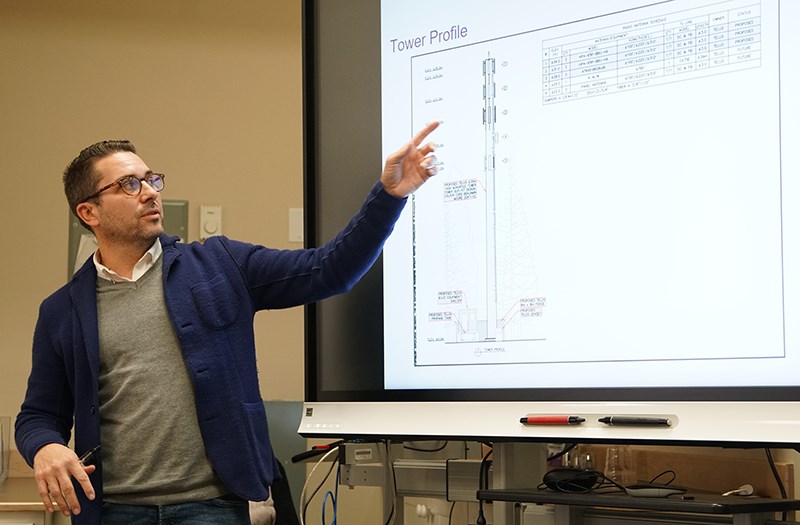Improved internet and cellular service is being proposed for Lund.
At the Tuesday, October 8, qathet Regional District planning committee meeting, regional directors heard a delegation from Chad Marlatt of Cypress Land Services, a consultant for Telus, regarding a proposed new Telus wireless tower and antenna installation at 9561 Larson Bay Road in Lund.
Marlatt said this is part of a bigger project around BC where Telus is building cell towers to provide wireless internet services to communities as well as mobile services. He said the proposed tower would basically provide a high-speed wireless alternative to people who are in more remote communities.
“This is one of about 25 projects,” said Marlatt. “The proposed tower that we are doing here is just south of Lund. It’s probably about 800 metres south of the waterfront area. It’s on some high ground there and in close proximity to some of the homes in the area.”
Marlatt said there had been a long-term agreement entered into with the property owner on Larson Bay Road prior to doing a consultation and proposal to the regional district.
He said the key goal is to provide wireless internet service. He said it was anticipated the tower would provide service three or four kilometres down the highway toward Powell River. It would also provide coverage north of Lund. Parts of Savary Island would also have improved service.
Installation will involve a solid pole tapered toward the top and the antennas will be flush mounted so there is not a big structure on the top of the pole.
“We’ve tried to blend it in as best as possible,” said Marlatt. “The tower is 35 metres in height. It will be about 10 metres above the top structures of the tree line. It’s integral to have the antennas above the tree line so they have as clear a sight line as possible.”
Marlatt said the installation is compliant with Health Canada safety regulations and the transmissions will be thousands of times below safety levels so it is very low energy that comes off the tower.
A public consultation is soon to be started for the project, according to Marlatt.
“We recognize it is in a small area and as I mentioned we’ve done quite a few of these in the past,” he said. “Sometimes in a small area it helps to have some community input into the project so we’re happy to do something like that.”
Electoral Area D director Sandy McCormick asked if line of sight means one would have to see the antennas to have service. Marlatt said not necessarily, but it helps to have the antennas above the tree line.
“Even if you have a couple of trees between your house and the antenna tower, you are still going to get a signal,” said Marlatt.
McCormick asked if the proposed setup was designed to deliver a signal instead of through a phone line or something like that. Marlatt said instead of providing fibre optic or wired services, the wireless setup was an alternative to that. He said people get a smart hub and place it outside of their homes and it provides internet service in and around their home.
Marlatt said the improved coverage, from one end to the other, probably spans five kilometres. It will not reach over to Okeover Inlet, however, because elevated land will block the signal.
Electoral Area A director Patrick Brabazon asked if the tower would fill in the dead zone on cell phones and Marlatt said it will also be providing mobile service.



